Neck Pain
Neck pain is when you have pain or discomfort in your upper back or cervical region of the spine. It can range from a mild ache to a sharp, shooting pain. Neck pain can be caused by things like poor posture or an injury or condition like arthritis.
Neck pain is the second most presented MSK condition behind low back pain, with estimates that 20% (LBP=40%) of the population at any given year will suffer from some form of neck pain raising to 70% (LBP=80%) in a lifetime.
Due to its location and range of motion, the neck is often left unprotected and subject to injury, whether this be to the unrelenting postural stresses of modern life or more traumatic events such as falls and car crashes which can create damage to the structure of the neck, which is known more commonly as a whiplash injury.
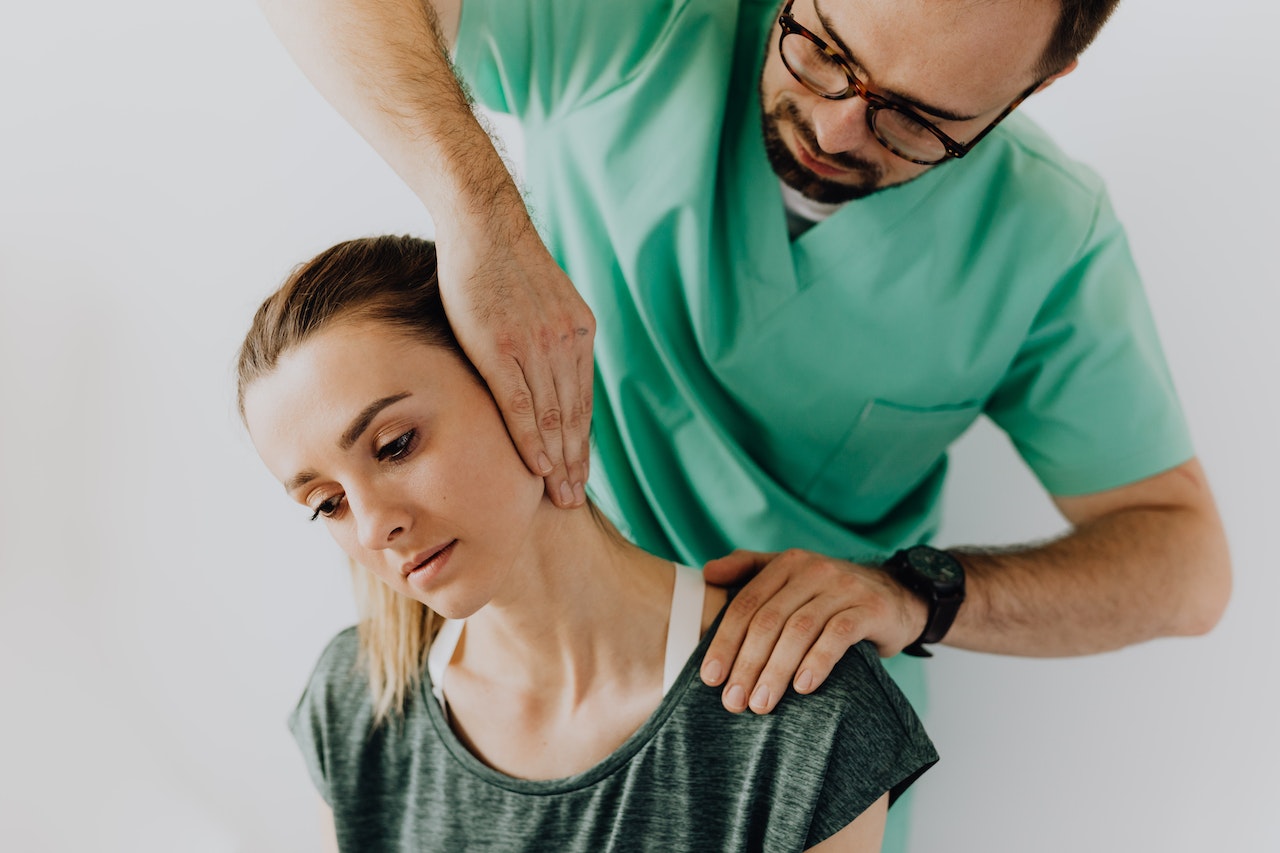
We have already talked extensively about how at The DISC Chiropractors we believe that the most significant factor in low back pain is unsurprisingly disc injuries (the clue is in our name 😊), with neck pain although it’s entirely possible to be suffering from an acute disc herniation it is far more common for patient to present with Degenerative Disc Disease and postural issues affecting the nerves mechanically.
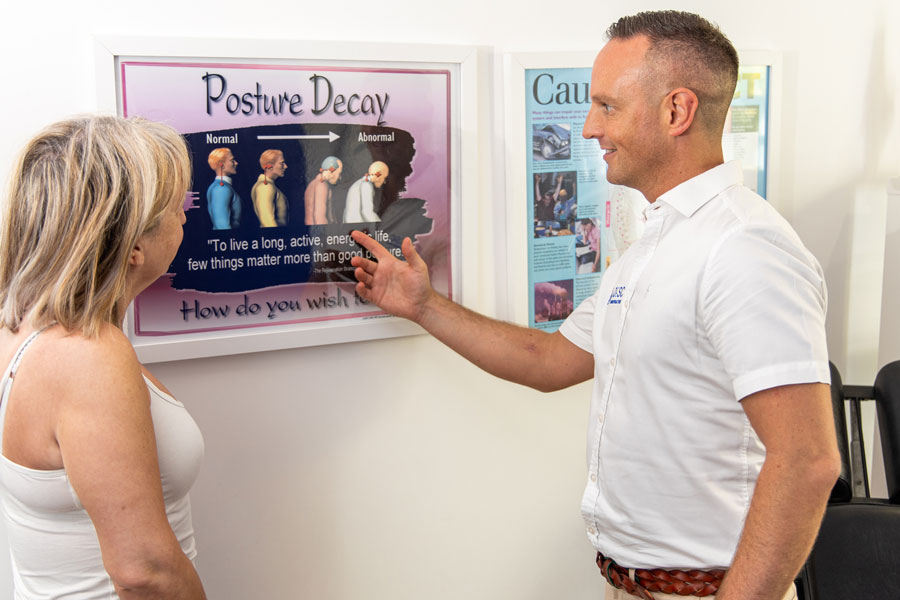
At DISC, every new patient starts their treatment with a full consultation and examination to determine what is not functioning correctly within their spine and to therefore identify the source of pain. This is especially important in the initial stages of pain, as the identification and subsequent actions can prevent a condition becoming more severe or chronic.
Just like back pain this thorough exam process is key to finding out the underlying cause of any tissue damage rather than trying to paper over the crack and solely focus on pain relief.
Neck pain is significantly impacted by the following:
- Poor Posture
- Trauma/whiplash (including minor impacts)
- Stress
- Alignment issues
POSTURE AND ALIGNMENT
The modern world is changing far too quickly for evolutionary changes to our bodies to adapt, the invention of books, newspapers and magazines started a trend of looking down that has only been greatly amplified by the arrival of mobile phones and tablets.
‘Text neck’ or ‘iposture’ are just a few of the slang term being used to describe the forward head posture that puts undue stress on the muscles and joints of the neck. Simple physics!
What this image indicates is that when the neck is placed in a disadvantaged forward position the effective weight of the head effectively triples.
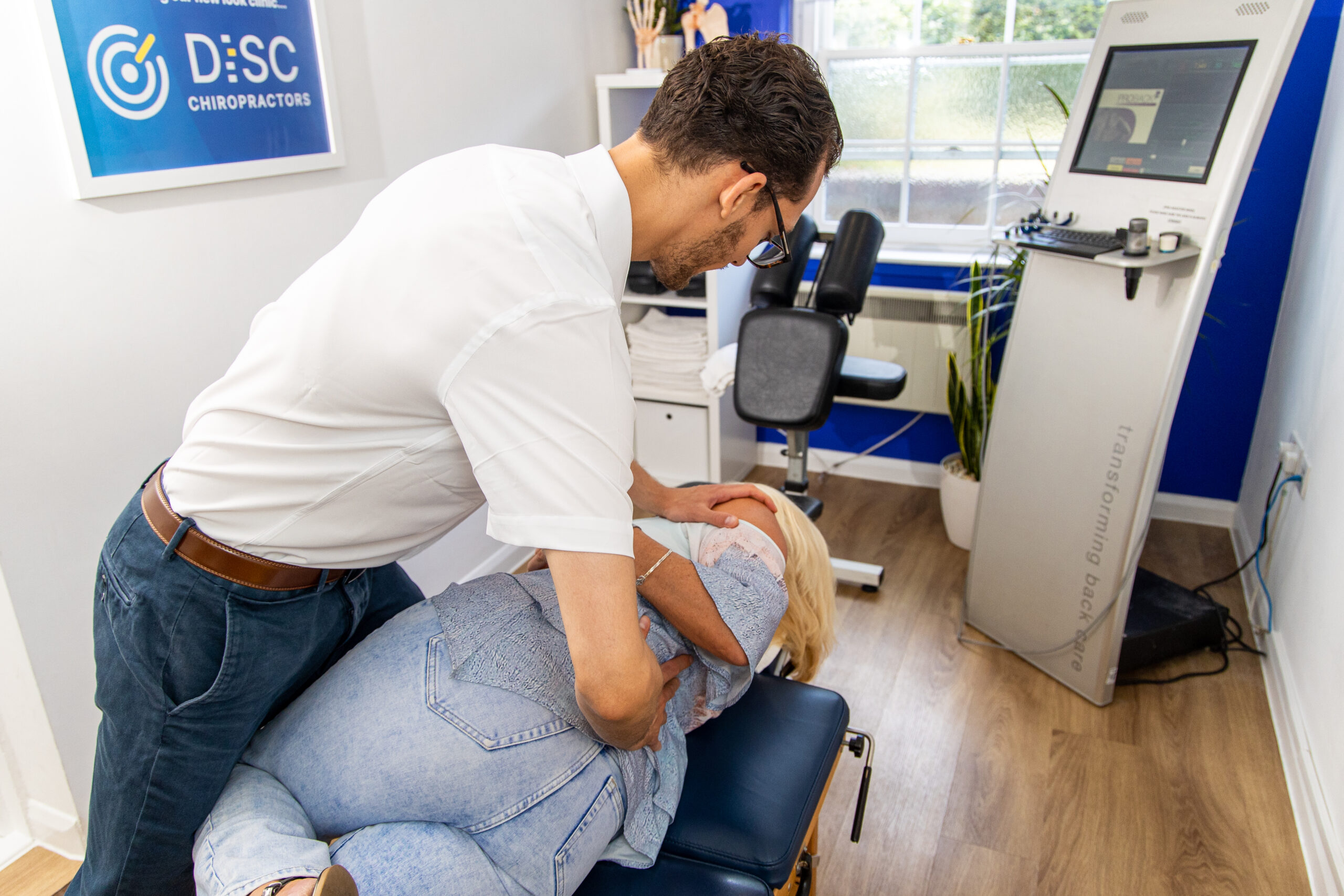


The term ‘Head Forward Posture’ refers to a poor habitual neck posture. This occurs when the neck shifts forward, placing the head further in front of the shoulders rather than directly above. Rather than the weight of the head being balanced over the bones of your spine, increased load is instead placed on muscles and other supporting structures.
Symptoms of this posture begin to arise as the body attempts to adapt and maintain our forward vision. As a result, many individuals experience neck pain, tension headaches, and fatigue.
Substantial research has gone into the mathematical modelling of the neck, and poor posture has been shown to have a straightening effect on the alignment of the vertebrae. A normal neck should have a curvature of 42 degrees; patients who have a neck curve of less than 16 degrees are considered significantly more likely to suffer from neck pain.
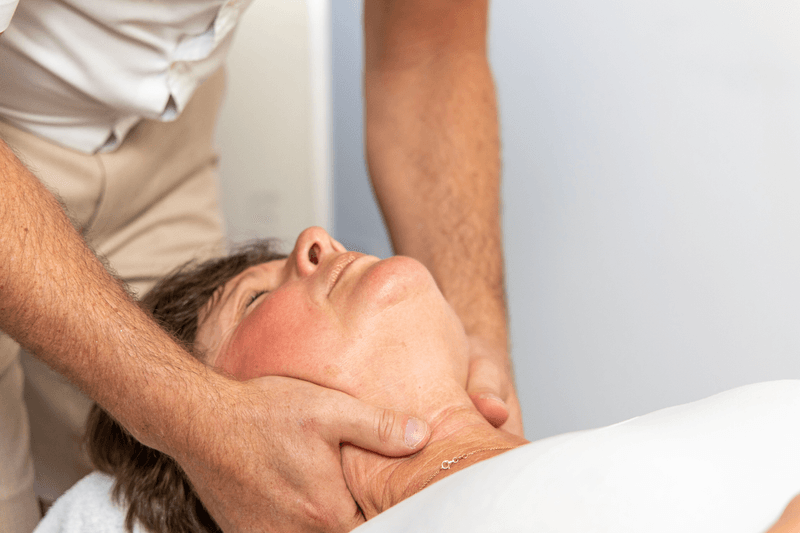
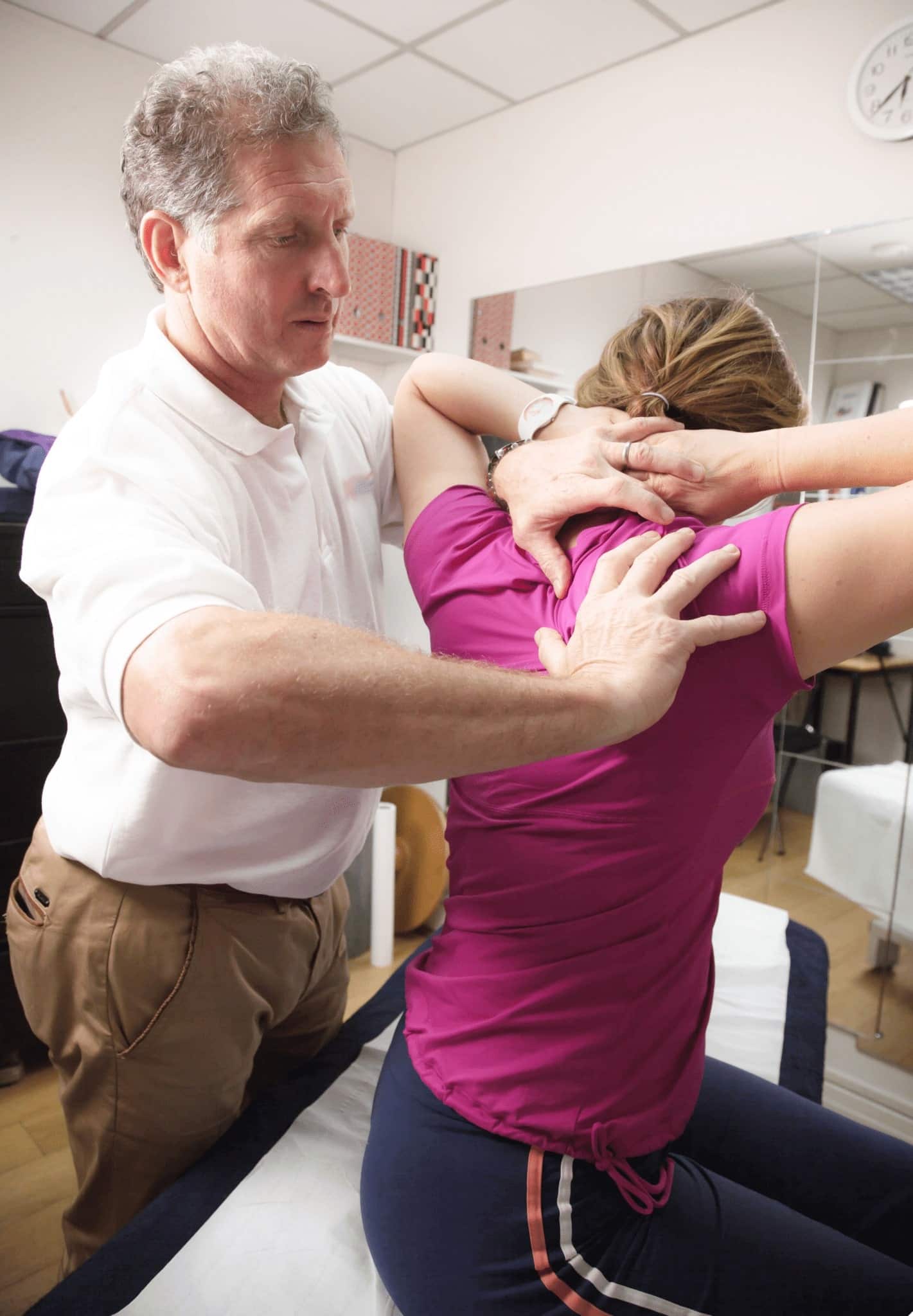
WHIPLASH – REVERSED NECK CURVATURES
Whiplash is a neck injury that can occur when your head is suddenly and forcefully thrown forward or backward.
The sudden movement can cause important structural ligaments in your neck to become torn or damaged. However, unlike ligament in the extremities which have millions of nociceptive (pain) fibres within them, the all important Posterior Longitudinal Ligament (PLL) has none.
Which means you can sustain damage to the shape or curve of your neck without necessarily having a huge amount of symptoms at the time.
One hallmark of a patient who has suffered from a whiplash injury is visualised via an Xray, where an alteration in alignment can be seen and is known as a reversed cervical lordosis.
A normal neck has been mathematically modelled to have an ideal curvature of 42 degrees, poor posture often leads to a straightened neck curve, i.e., zero degrees; however, when stood in a neutral posture if we see the individual vertebral of the neck curving forwards rather than back upon themselves it’s a clear indication that something traumatic has occurred in order to overcome the stretchy ligaments.
The misconception around whiplash injuries is that they have to occur from a big car crash, even minor impact around the 10 mph mark have been shown to be able to create ligament damage in the neck, making sports impacts, fairground rides, as well as minor fender benders all able to initiate potential injury.
In truth we’ve all likely had scores of potentially traumatic events capable of damage; whether or not they have altered the long-term shape of the neck is the crucial factor.
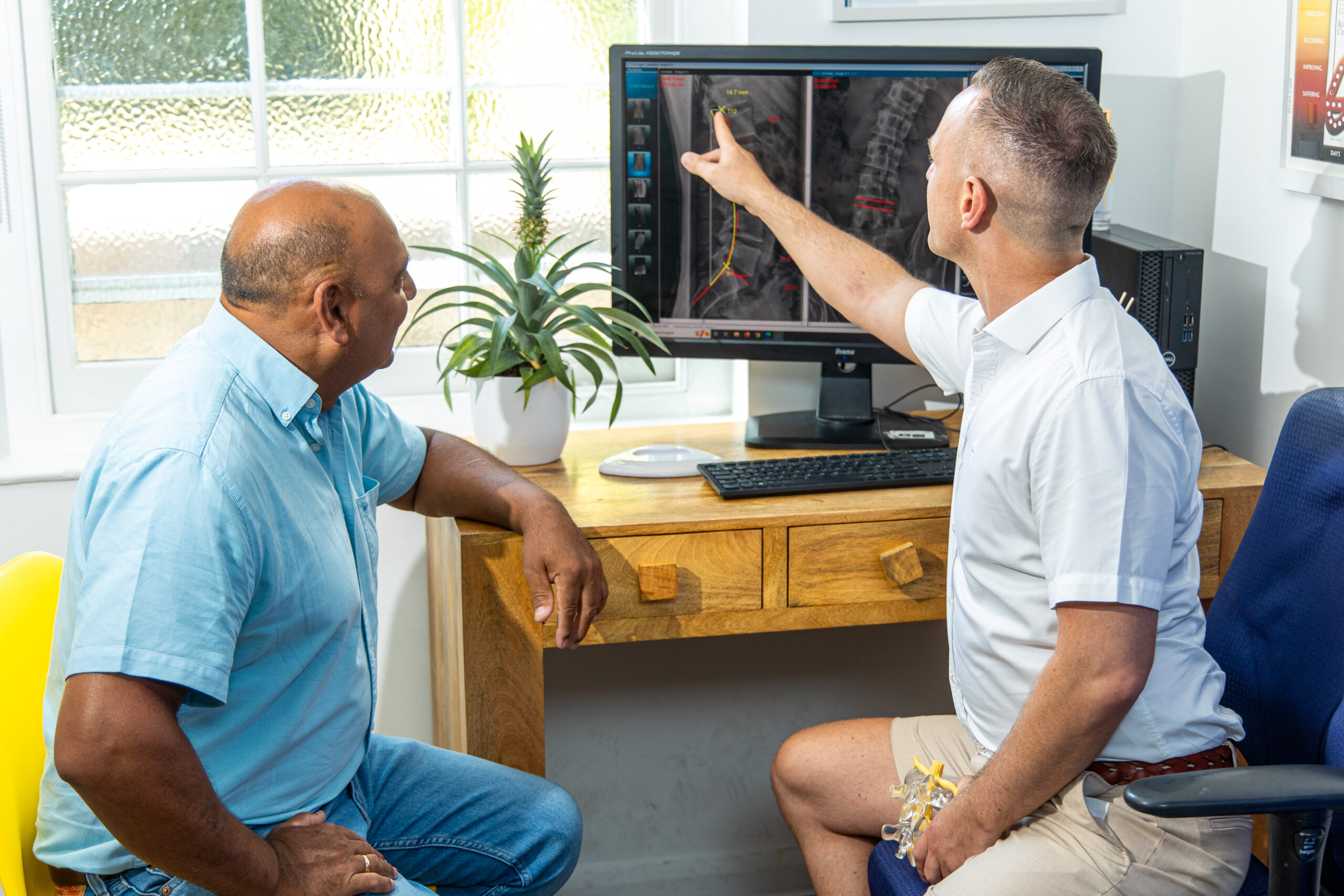

Symptoms of whiplash include:

Pain or stiffness in the neck, jaw, shoulders back or arms

Headaches

Dizziness

Blurred vision or ringing in the ears

Tingling or numbness in the arms, hands or shoulders

Memory loss or difficulty concentrating

Nervousness or irritability

Difficulty sleeping

Fatigue

Burning or prickling around your neck

Depression

Vertigo
DISC TREATMENT PROTOCOL
The first step in treating any condition is to find the underlying cause, often the pain experienced by a patient is the last “domino” to fall in a cascade of reactions. A thorough examination at our DISC Clinic in Surbiton will help not only identify exactly what is generating the pain but aim to understand its root cause.
Once a diagnosis is determined, treatment options to address the issue can be explored. Pain relief, corrective measures, and preventative strategies can be implemented to ensure the problem does not return in the future.
The first steps towards gaining pain relief often come by mobilising the soft tissues and joints in the area; this is achieved by using a combination of manual mobilising chiropractic techniques with our unique blend of Instrument Assisted Adjusting tools which can be used to gently initiate movement and blood flow (healing) in stubborn or inflamed tissue when stronger techniques may be contraindicated.
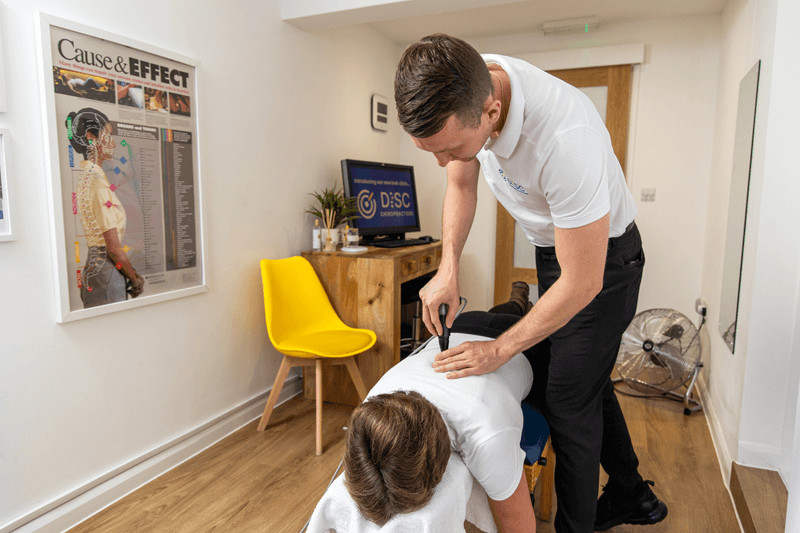
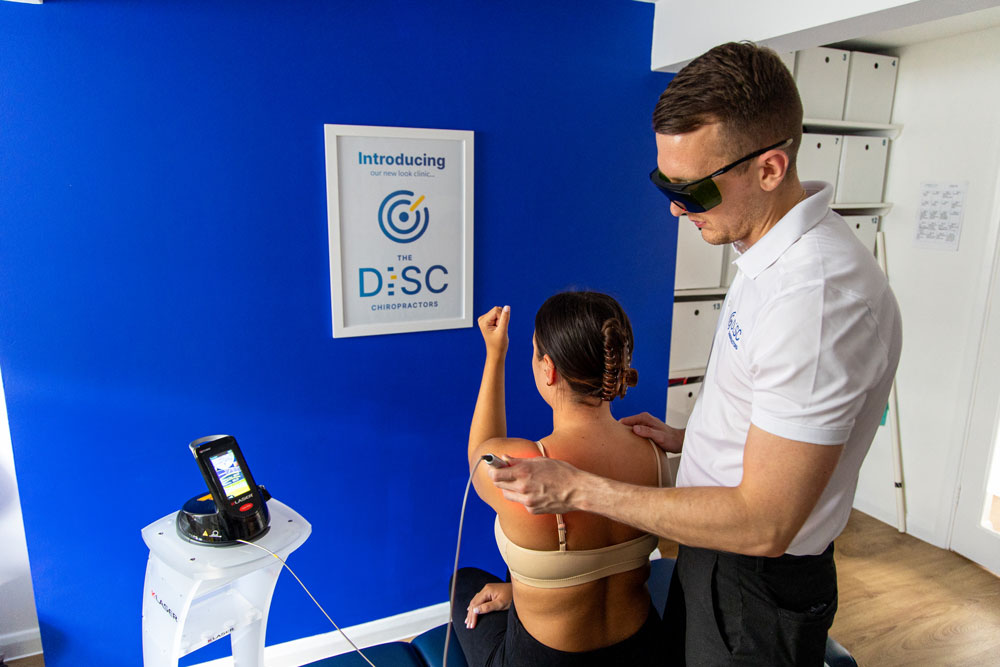
Spinal Decompression Therapy is one of the powerhouse treatments available at The DISC Chiropractors, its traction technology provides a unique ability to heal disc injuries and to un-trap the nerves that are often at fault for issues further down the chain for example in the arms and legs.
When conditions struggle to heal, Laser Therapy is an extremely safe and effective method of advancing rates of recovery. It’s warm photon light energy stimulates mitochondrial activity to enhance recovery in each and every cell of the body. Laser Therapy is especially useful in cases of inflammation, such as arthritic and repetitive strain conditions.
A major part of how our treatment protocols work is to ensure whilst the pain is coming under control, we are filling the patient with the knowledge of how to keep and maintain their results using corrective measures and rehabilitation tools to enhance their outcomes.
To find out about some of the other conditions we treat click link
Contact Us
If you would like to find out what we could do to help your Neck Pain, please click the icon below to book a thorough consultation to evaluate your case.
